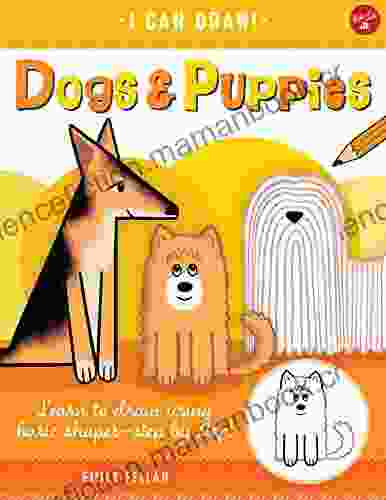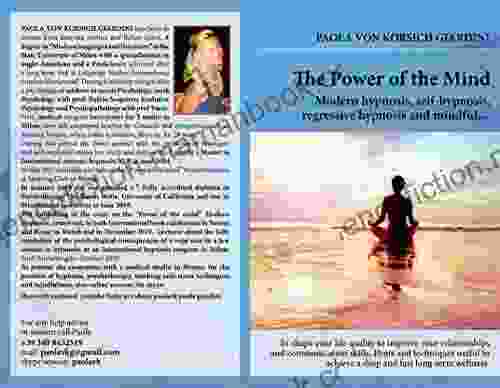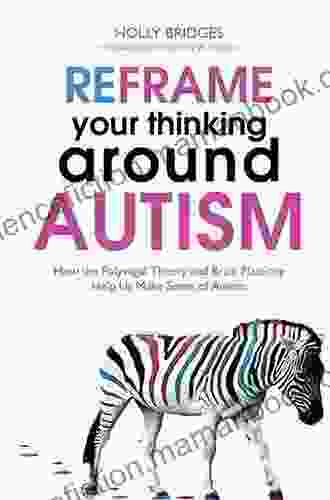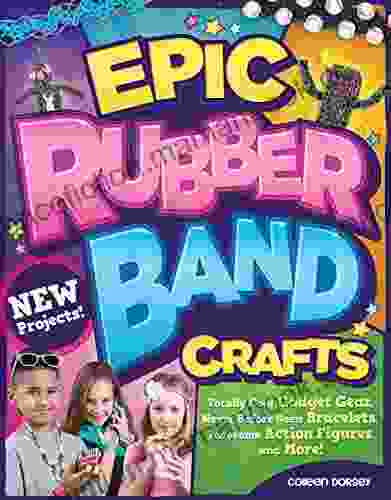Learn to Draw Using Basic Shapes Step by Step: A Comprehensive Guide for Beginners

Have you always wanted to learn how to draw but felt intimidated by the thought of it? The good news is, drawing is a skill that anyone can learn with practice and a little bit of guidance. One of the best ways to get started is to break down complex subjects into simple shapes.
5 out of 5
| Language | : | English |
| File size | : | 6985 KB |
| Text-to-Speech | : | Enabled |
| Screen Reader | : | Supported |
| Enhanced typesetting | : | Enabled |
| Word Wise | : | Enabled |
| Print length | : | 92 pages |
In this comprehensive guide, we'll teach you how to use basic shapes as building blocks to create realistic and eye-catching drawings. We'll start with the fundamentals and gradually work our way up to more advanced techniques. Along the way, we'll provide step-by-step instructions, helpful tips, and inspiring examples.
Step 1: Understand the Basic Shapes
The first step to drawing using basic shapes is to familiarize yourself with the different shapes and their properties. The most common basic shapes used in drawing are:
- Circle: A closed curve that has no corners or edges.
- Square: A four-sided polygon with all sides of equal length.
- Rectangle: A four-sided polygon with two pairs of parallel sides.
- Triangle: A three-sided polygon.
- Oval: A stretched circle.
These basic shapes can be combined and transformed in various ways to create more complex forms.
Step 2: Break Down Complex Subjects
Once you understand the basic shapes, the next step is to start breaking down complex subjects into simpler forms. For example, a human face can be broken down into circles (for the head and eyes),ovals (for the nose and mouth),and rectangles (for the jawline and forehead). By reducing complex subjects to their basic shapes, you can make them much easier to draw.
Step 3: Practice Shading and Proportions
Shading and proportions are essential elements of drawing. Shading adds depth and realism to your drawings, while proportions help you create accurate and balanced artwork. Here are a few tips:
- Shading: Start by using light, gentle strokes to establish the basic shadows and highlights. Gradually increase the pressure and darkness of your strokes to create more contrast and depth.
- Proportions: Pay attention to the relative sizes and positions of the different shapes that make up your subject. Use measuring tools or grids to ensure accuracy.
Step 4: Create Realistic Drawings
Now that you have a solid understanding of the basics, you can start creating more realistic drawings. Here are a few tips:
- Observe your subject carefully: Pay attention to the details, such as the shape, texture, and lighting. Sketching from life can be a great way to improve your observational skills.
- Use reference photos: If you're not able to draw from life, use reference photos to help you capture the details of your subject.
- Practice regularly: The key to becoming a better artist is practice. Draw regularly, and don't be afraid to experiment with different techniques and styles.
Learning to draw using basic shapes is a fun and rewarding experience. By following the steps outlined in this guide, you can develop your drawing skills and create beautiful and realistic artwork. Just remember to be patient, practice regularly, and have fun!

5 out of 5
| Language | : | English |
| File size | : | 6985 KB |
| Text-to-Speech | : | Enabled |
| Screen Reader | : | Supported |
| Enhanced typesetting | : | Enabled |
| Word Wise | : | Enabled |
| Print length | : | 92 pages |
Do you want to contribute by writing guest posts on this blog?
Please contact us and send us a resume of previous articles that you have written.
 Top Book
Top Book Novel
Novel Fiction
Fiction Nonfiction
Nonfiction Literature
Literature Paperback
Paperback Hardcover
Hardcover E-book
E-book Audiobook
Audiobook Bestseller
Bestseller Classic
Classic Mystery
Mystery Thriller
Thriller Romance
Romance Fantasy
Fantasy Science Fiction
Science Fiction Biography
Biography Memoir
Memoir Autobiography
Autobiography Poetry
Poetry Drama
Drama Historical Fiction
Historical Fiction Self-help
Self-help Young Adult
Young Adult Childrens Books
Childrens Books Graphic Novel
Graphic Novel Anthology
Anthology Series
Series Encyclopedia
Encyclopedia Reference
Reference Guidebook
Guidebook Textbook
Textbook Workbook
Workbook Journal
Journal Diary
Diary Manuscript
Manuscript Folio
Folio Pulp Fiction
Pulp Fiction Short Stories
Short Stories Fairy Tales
Fairy Tales Fables
Fables Mythology
Mythology Philosophy
Philosophy Religion
Religion Spirituality
Spirituality Essays
Essays Critique
Critique Commentary
Commentary Glossary
Glossary Bibliography
Bibliography Index
Index Table of Contents
Table of Contents Preface
Preface Introduction
Introduction Foreword
Foreword Afterword
Afterword Appendices
Appendices Annotations
Annotations Footnotes
Footnotes Epilogue
Epilogue Prologue
Prologue Sara Orwig
Sara Orwig Greg Jameson
Greg Jameson Charles A Perrone
Charles A Perrone Dr Howard Jeffrey Bender
Dr Howard Jeffrey Bender John Keats
John Keats Susan Isaacs
Susan Isaacs Ernie Gammage
Ernie Gammage Stewart Smith
Stewart Smith Christopher Herrera
Christopher Herrera Jim Endersby
Jim Endersby Emily Fellah
Emily Fellah Mikhail Tank
Mikhail Tank Thomas Pramendorfer
Thomas Pramendorfer Sam Sagmiller
Sam Sagmiller Cath Smith
Cath Smith Neel Ingman
Neel Ingman Angus Donald
Angus Donald Matthew Lippman
Matthew Lippman Shell Teri
Shell Teri Kevin Kryptor
Kevin Kryptor
Light bulbAdvertise smarter! Our strategic ad space ensures maximum exposure. Reserve your spot today!
 Zachary CoxFollow ·5.7k
Zachary CoxFollow ·5.7k Hamilton BellFollow ·8.5k
Hamilton BellFollow ·8.5k Hugh BellFollow ·3k
Hugh BellFollow ·3k Barry BryantFollow ·14.8k
Barry BryantFollow ·14.8k Zadie SmithFollow ·14.2k
Zadie SmithFollow ·14.2k Jedidiah HayesFollow ·10.5k
Jedidiah HayesFollow ·10.5k Cruz SimmonsFollow ·18.8k
Cruz SimmonsFollow ·18.8k Yukio MishimaFollow ·2.6k
Yukio MishimaFollow ·2.6k
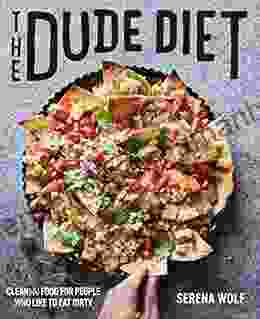
 Ashton Reed
Ashton ReedClean(ish) Food for People Who Like to Eat Dirty
By: [Your Name] Are...

 Ronald Simmons
Ronald SimmonsThe Handbook for Educators: A Comprehensive Guide to...
The Handbook for...

 Derrick Hughes
Derrick HughesAny Place Hang My Hat: A Hauntingly Beautiful Novel by...
A Masterpiece of...

 Adrien Blair
Adrien BlairFly Me to the Moon Vol. 5: A Lunar Odyssey through...
In the vast...

 William Powell
William PowellTips By Gardeners On Variety Of Subjects
Gardening...
5 out of 5
| Language | : | English |
| File size | : | 6985 KB |
| Text-to-Speech | : | Enabled |
| Screen Reader | : | Supported |
| Enhanced typesetting | : | Enabled |
| Word Wise | : | Enabled |
| Print length | : | 92 pages |


